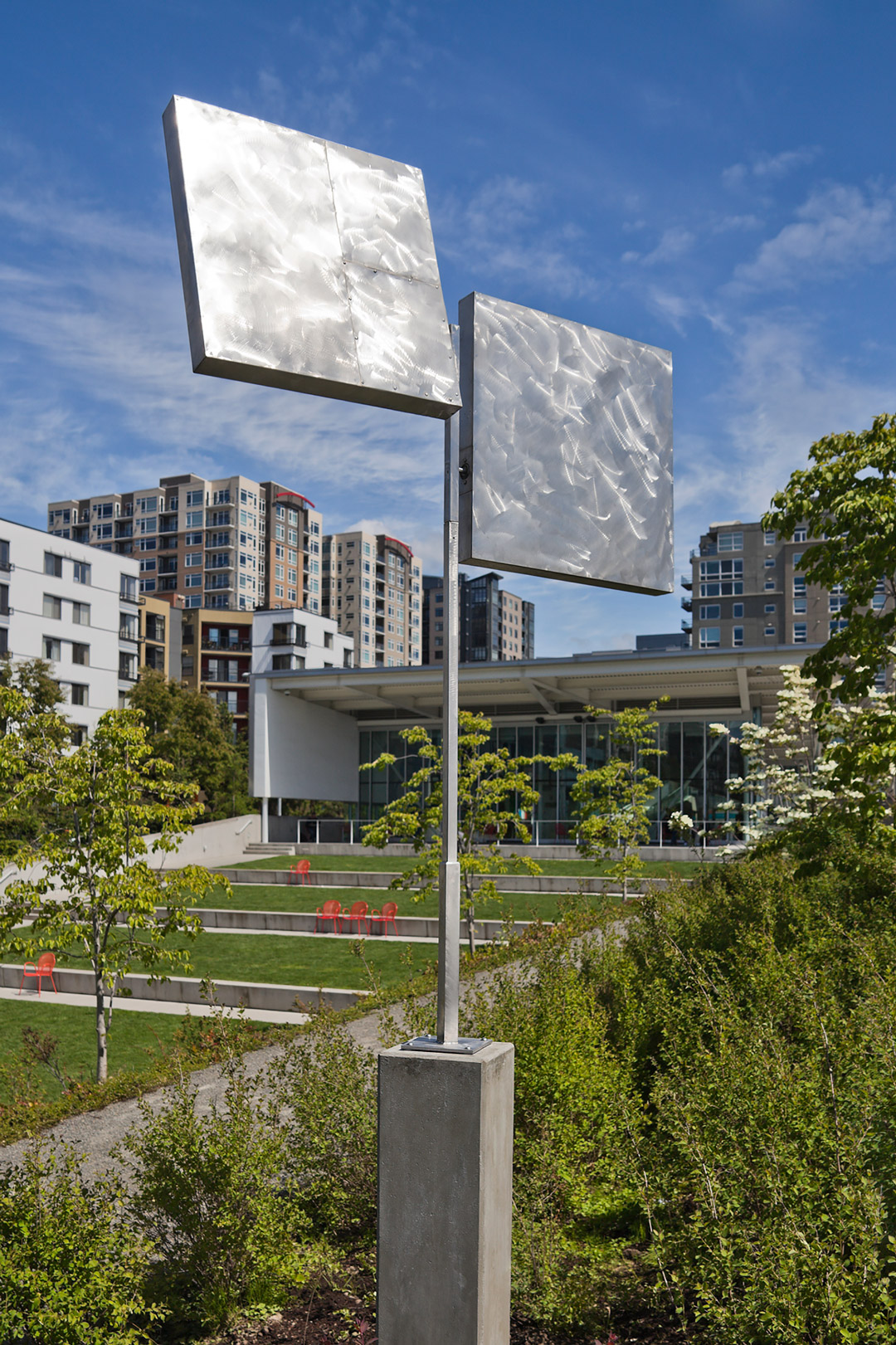Object of the Week: Two Plane Vertical Horizontal Variation III

It’s early October and the sun is still shining in Seattle. These early fall days in the Northwest always feel like something special: a lull between the over-scheduled blaze of the summer and the damp grayness of winter, when Seattleites can still take advantage of the great outdoors. And what better way to do so than with a stroll through the Olympic Sculpture Park, visiting some old favorites—or maybe some sculptures you may have missed among the summer crowds.
Tucked away at the top of the park’s signature Z-path is George Rickey’s Two Plane Vertical Horizontal Variation III (1973). A deceptively simple composition, the sculpture consists of two stainless steel square elements, mounted slightly offset from each other on a tall pole. The surfaces of the squares are burnished in a gestural, almost painterly pattern, perhaps belying Rickey’s early background as a painter. Overall, its simplified geometric forms, lines, and planes are reminiscent of a history of constructivism—an early 20th century avant-garde movement on which Rickey published a book in 1967—and the aesthetics of the New York minimalist artists who were his contemporaries. What really distinguishes Rickey’s work, though, is not its form or material, but a different element altogether: movement.
Rickey was one of the pioneers who brought movement to abstract sculpture. Referring to them as “useless machines,” his kinetic works are meticulously engineered so that their components shift, rotate, or spin with even the slightest breeze. In the case of Two Plane Vertical Horizontal Variation III, the seemingly simple squares are in fact compound pendulums, spinning around a central point (the heart of the plane) in parallel paths. They respond directly to the effects of nature, from the most dramatic windstorm to the lightest gust of air.
It is fitting that Two Plane Vertical Horizontal Variation III is located so near Alexander Calder’s iconic Eagle, as Calder’s kinetic sculptures were a major influence on Rickey’s own “useless machines.” But where Calder’s work exudes a playful, organic, biomorphic quality, Rickey’s is rooted in geometric exactitude, an interest in the poetry of a precisely engineered object. He recalls the development of these ideas when he began making kinetic works in 1949:
I committed myself to a completely new technology, a new esthetic, new criteria, a new kind of response from others and a new antiphony between myself and the new object I held in my hand. I had to wonder whether Calder had said it all; when I found he had not, I had to choose among the many doors I then found open. I had to learn to be a mechanic and to recall the physics I had learned at 16. . . . I had embarked on a long-term project—to make an art in which every object had to be preconceived and had to be able to go through its motions completely and satisfactorily, or I had made nothing at all.1
The sculpture is only truly activated when this order with which it was designed—based in an acute understanding of mathematics, engineering, and physics—comes into contact with the disorder of nature. Rickey intended this interaction—he meant for his kinetic sculptures to be installed outdoors, bearing all of the elements—and it is in this interplay between science and nature where the work is its most lyrical. So the next time you’re taking advantage of a sunny fall day in the sculpture park, I invite you to stay awhile and watch the sculpture at work—spinning precisely and gracefully as it heralds every change in the weather.
– Carrie Dedon, Assistant Curator of Modern and Contemporary Art